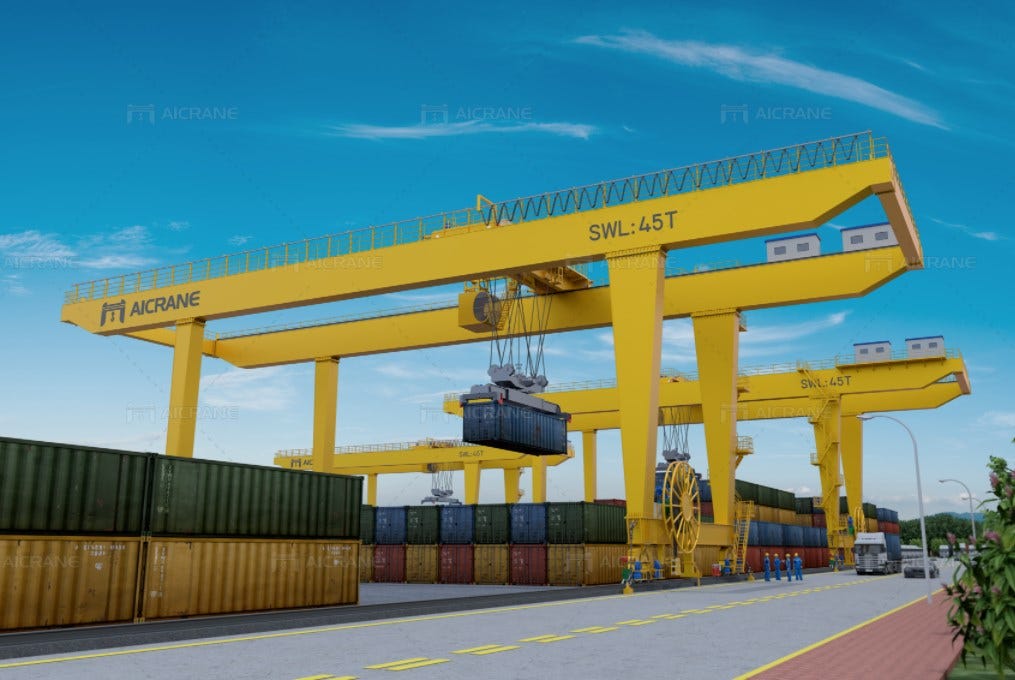In the world of material handling and industrial operations, efficiency and precision are paramount. Gantry cranes have emerged as indispensable tools, revolutionising the way heavy loads are lifted and transported within various industries. This article delves into the intricacies of gantry cranes, exploring their design, applications, and the transformative impact they have on modern workplaces.
Understanding Gantry Cranes
Design and Structure
Gantry crane, also known as portal cranes, are overhead cranes with a framework supported by vertical legs on either side of the load. The horizontal beam, often called the bridge, connects the legs and supports the lifting mechanism. The crane is typically mounted on wheels or tracks, allowing for lateral movement along a rail or runway.
Varieties of Gantry Cranes
There are different types of gantry cranes tailored for specific applications. Single girder gantry cranes have one bridge beam and are suitable for light to moderate loads. On the other hand, double girder gantry cranes, with two parallel bridge beams, are designed for heavier loads and increased stability. The versatility of gantry cranes is further enhanced by their mobility, making them suitable for both indoor and outdoor use.
Applications of Gantry Cranes
Manufacturing and Construction
Gantry cranes play a pivotal role in manufacturing and construction settings, where the movement of heavy materials is a constant requirement. These cranes facilitate the efficient handling of raw materials, machinery, and finished products, streamlining production processes and reducing manual labor.
Container Handling at Ports
In the shipping industry, gantry cranes are widely employed for the swift and precise movement of shipping containers. Container gantry cranes, equipped with spreader beams, efficiently load and unload containers from ships onto trucks or trains, contributing to the seamless flow of goods in bustling ports.
Aerospace Industry
The aerospace sector relies on gantry cranes for the careful handling of aircraft components during manufacturing and assembly. These cranes ensure that delicate and massive parts are maneuvered with precision, meeting the stringent quality standards of the aerospace industry.
Advantages of Gantry Cranes
Versatility
Gantry cranes are celebrated for their adaptability to diverse environments. Whether it’s a construction site, a manufacturing facility, or a shipping port, these cranes can be customised to suit specific needs. Their mobility and ability to cover large areas make them an ideal choice for dynamic workplaces.
Increased Productivity
The efficiency of gantry cranes translates to enhanced productivity in industrial settings. With the ability to lift and transport heavy loads swiftly and precisely, these cranes contribute to streamlined workflows and reduced downtime. This, in turn, boosts overall operational efficiency.
Improved Safety
Gantry cranes are designed with safety features such as overload protection and emergency stop mechanisms. The use of advanced control systems adds an extra layer of safety, ensuring that operations are carried out with precision and minimising the risk of accidents.
Conclusion
Gantry cranes have become integral components of modern industrial landscapes, offering a perfect blend of strength, precision, and adaptability. From manufacturing plants to shipping yards and aerospace facilities, these cranes continue to redefine the way heavy materials are handled and transported. As technology advances, we can expect further innovations in gantry crane design and capabilities, solidifying their status as indispensable assets in the realm of material handling.




